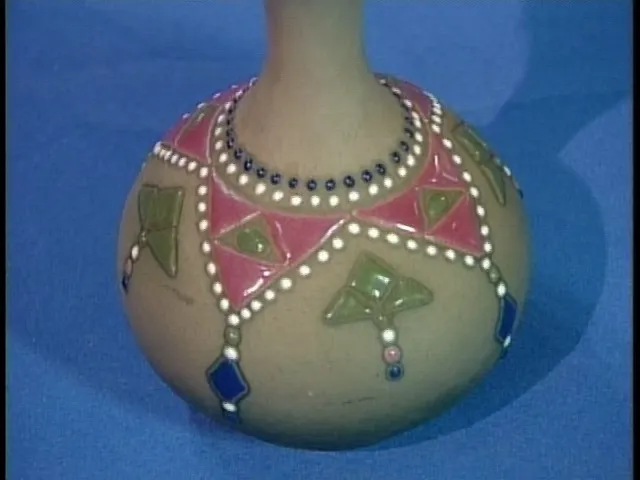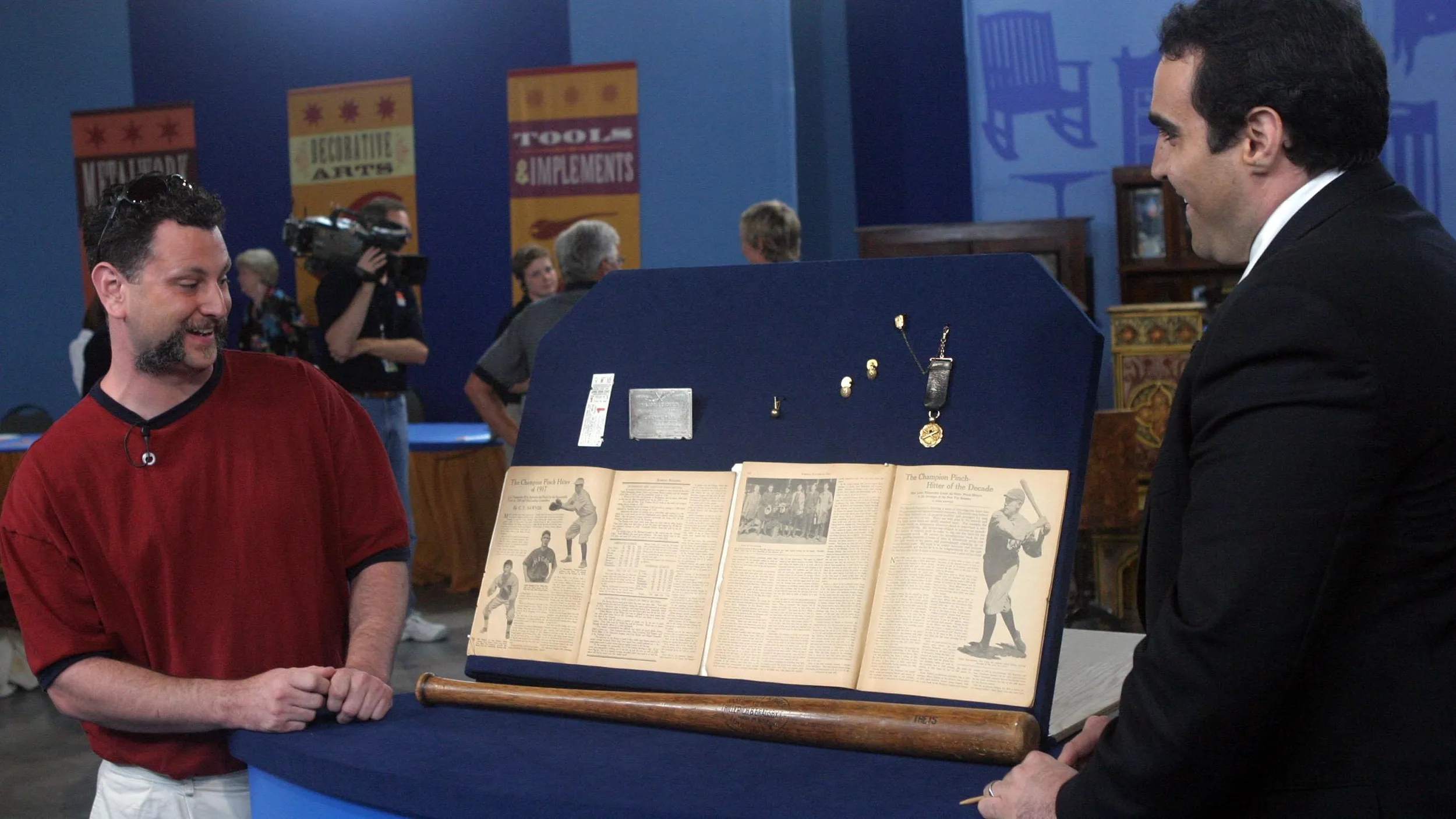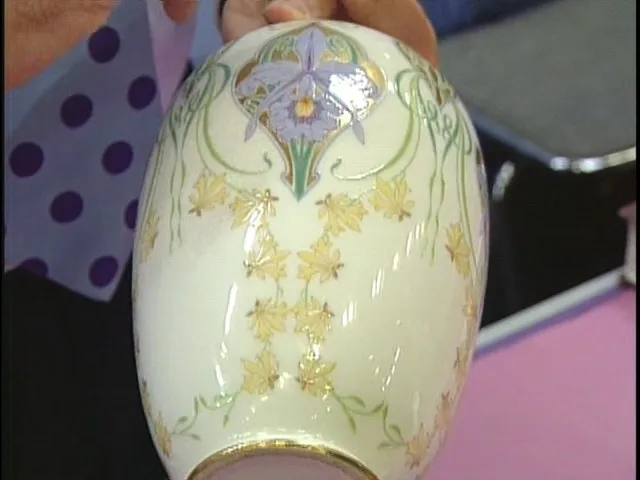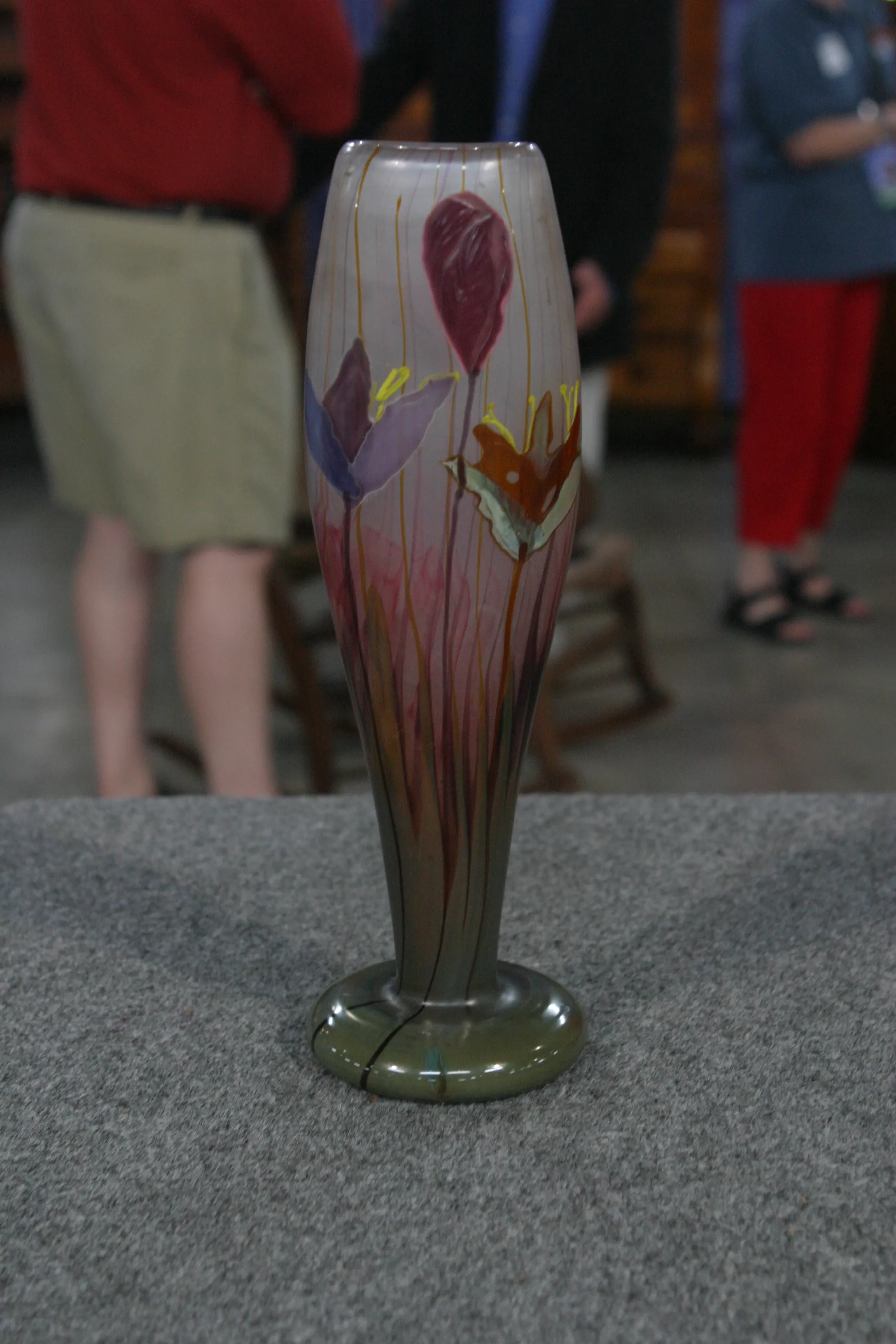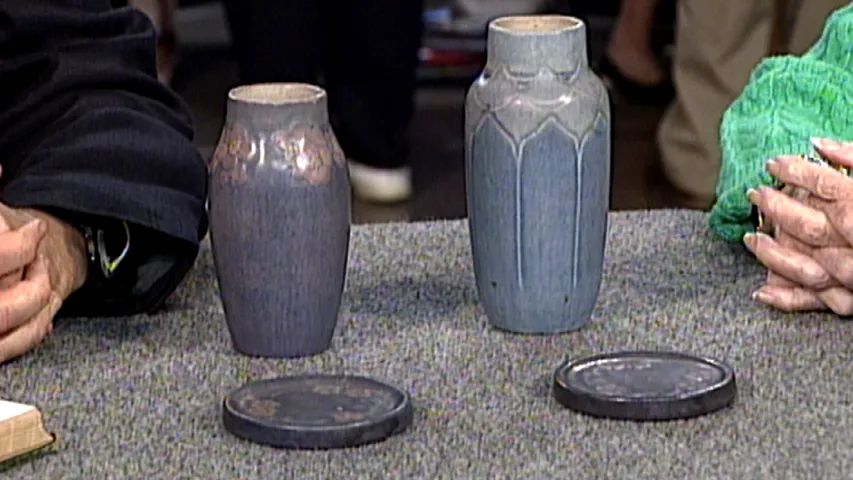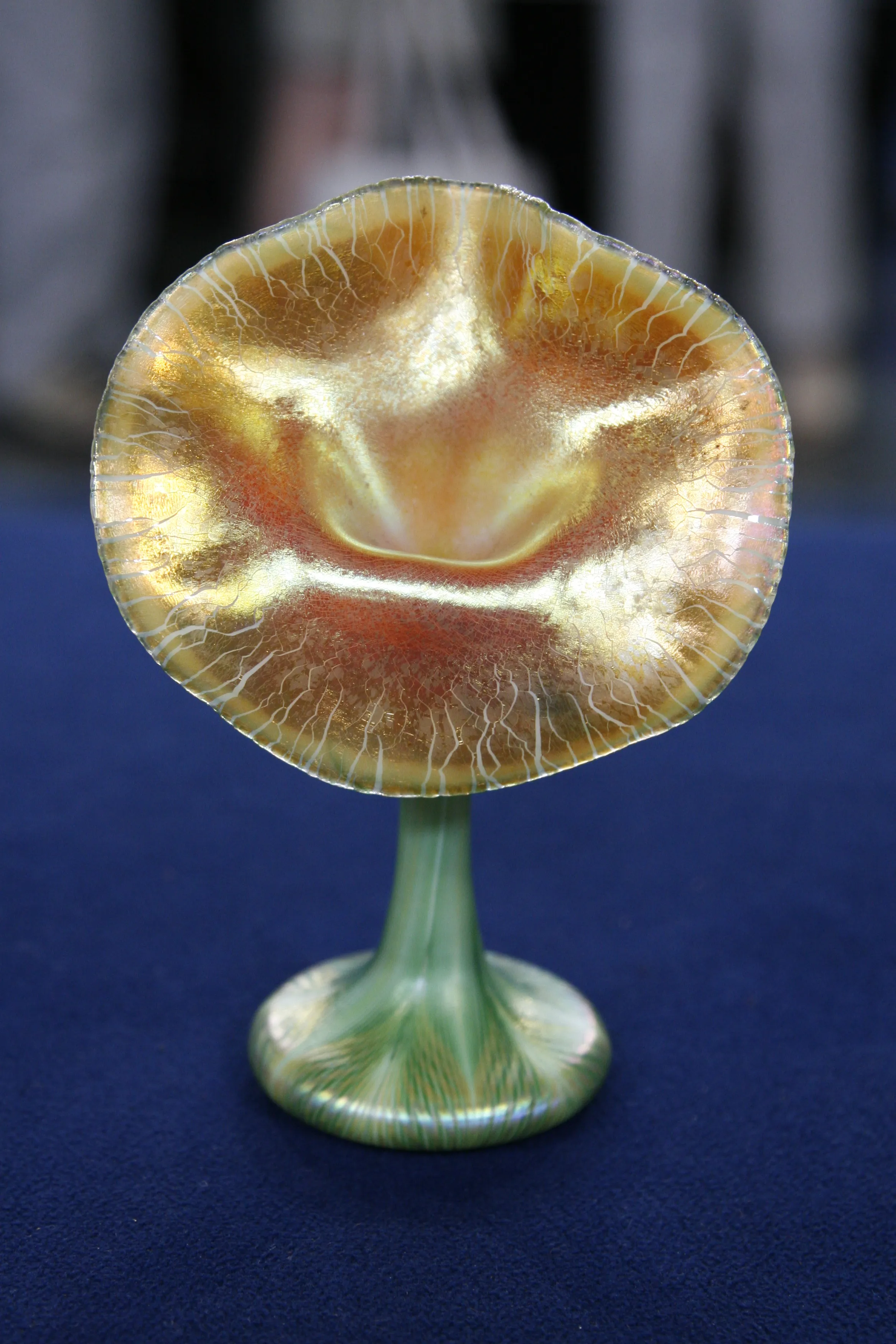GUEST: I got this in Beatrice, Nebraska, about 30, 35 years ago in an antique store.
APPRAISER: Okay.
GUEST: And I know nothing about it.
APPRAISER: Okay, about what did you pay for it, you remember?
GUEST: Not exactly, but I'm sure I wouldn't have paid over $25.
APPRAISER: Okay, well, what's your best guess? What do you think it is?
GUEST: Well, let's put it this way-- I'd like to have it be a nice piece, I'd like to have it be Weller, might be Roseville. I don't know what it is.
APPRAISER: Well, you're in the ballpark, you're right in the right area. This is actually made in Zanesville, Ohio, but it's McCoy.
GUEST: McCoy, really?
APPRAISER: It's early Brush-McCoy-- this line is called "Jewel." You got a matte background and then this high-glaze enameled... It's got, like, a squeeze-bag technique.
GUEST: Okay.
APPRAISER: Of putting on the enamel decoration.
GUEST: Okay.
APPRAISER: And this was introduced in 1923, and at that point, this is some of the best stuff in that part of the United States that was being made.
GUEST: Is that right?
APPRAISER: It really, as far as this type of art pottery. And then after the 1920s, then their quality began to decline a lot, going to more utilitarian-type stuff. Oh. This is a really desirable vase, and for this line, it's a quite large one.
GUEST: Oh.
APPRAISER: They're usually much smaller than that, and our estimate is, this is worth between $700 and $1,000.
GUEST: Okay.

